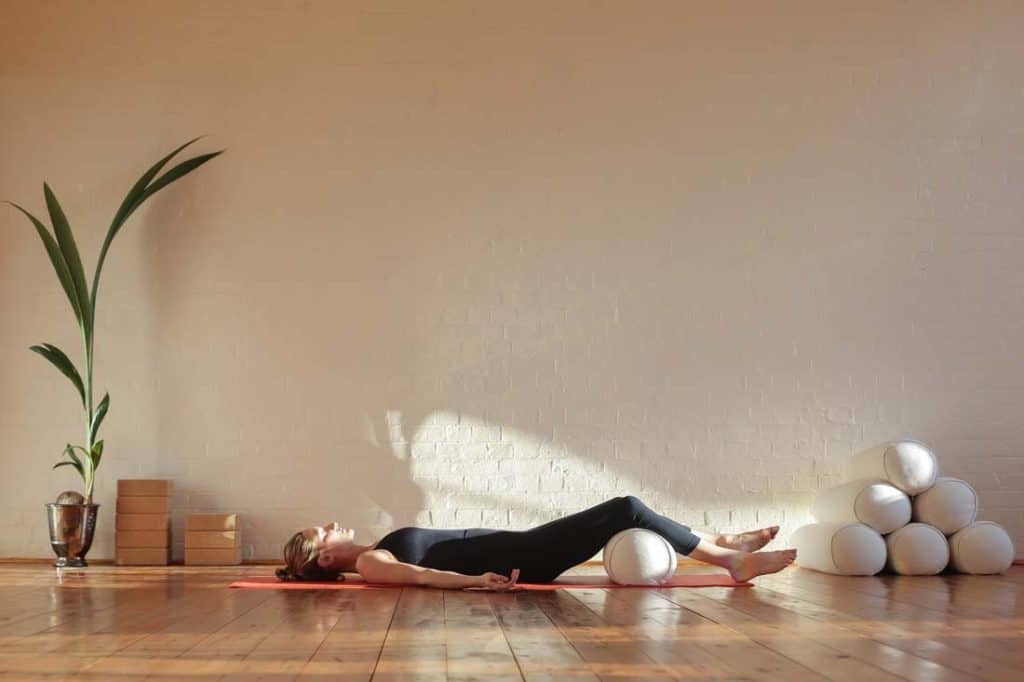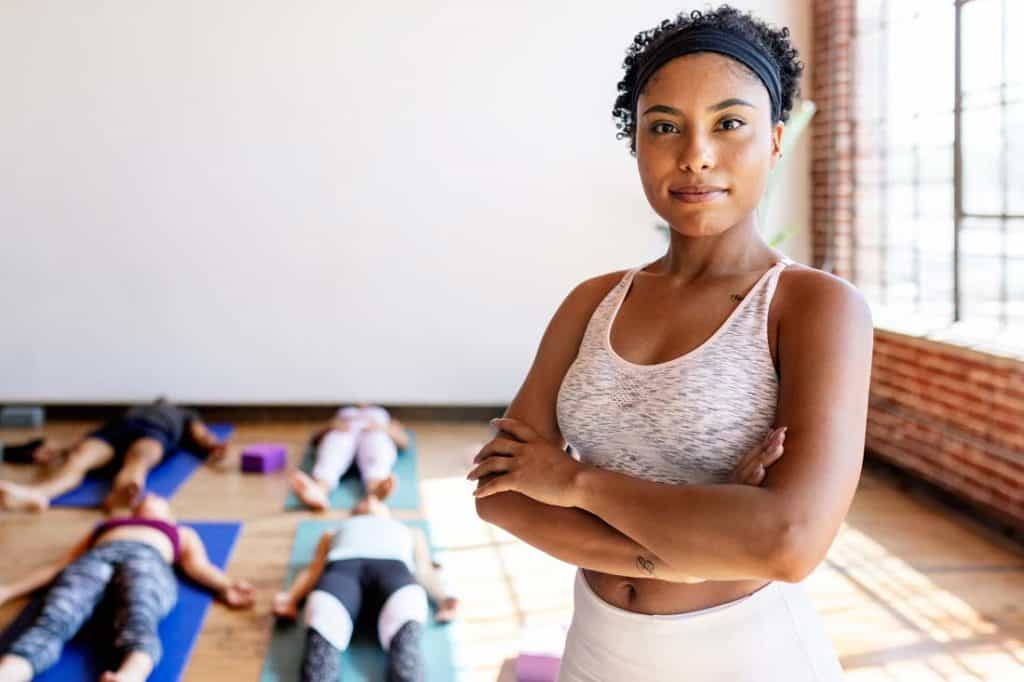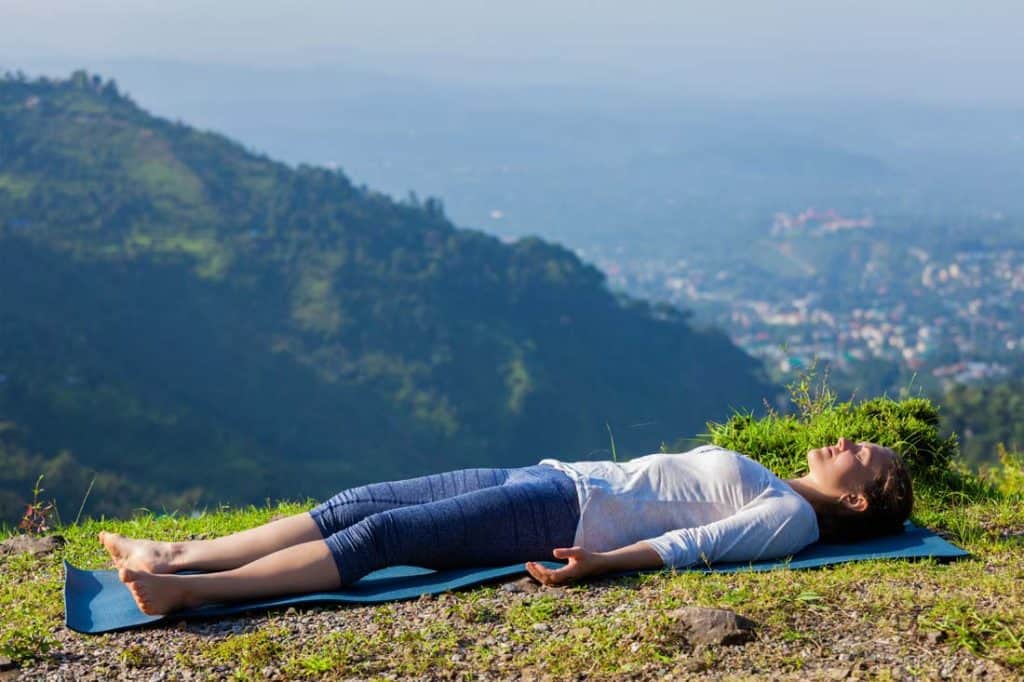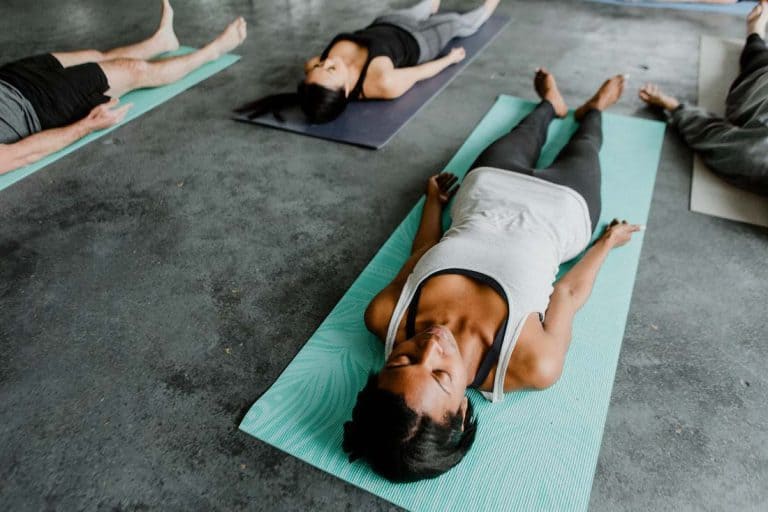Every spiritual teacher I’ve read claims that meditation happens all the time, wherever you are, whatever you do. However, the well-known sitting meditation posture is one of them. May you have pondered on the question of can you meditate lying down? Is it doable or challenging to achieve a meditative state while on your back or your side?
Here is the information about all the different meditation postures as we practice meditation.
Why Finding Time To Meditate Is Important
Even meditating for 10 minutes a day gives you tremendous results that will manifest after a couple of times you perform that meditation practice that. In case you think you can’t find these 10 minutes, then chances are you need to consider that you need to allocate time for meditation and pause for a while. The actual problem presents the solution.

Meditation lying down or in a sitting position only brings valuable benefits. Sitting or lying on your back quietly while focusing on the flow of your breath or a single point of attention or thought and relaxing gradually brings you to the “here and now.”
Doing meditation lying down on your back or another way helps you gradually manage stress and cope with complex thoughts and emotions.
The impact of regularly (daily is more efficient) meditation, even for a short period per day, makes you more peaceful and relaxed, able to deal with everyday challenges more efficiently.
We need to meditate to pause and create space between our thoughts. We need to see our thoughts and how they drive our days. Meditation is not a fad. Serious and important studies have been taking place for years, and in some education organizations, it is introduced as part of daily activities.
Studies show that we make around 50.000 thoughts per day, which we mostly don’t take notice of. Around half of our walking time is like sleeping while awake. Our minds wander around with things in our unconscious parts that drive what we do—that “blur” continuous in our sleep too.
Meditation helps to see and reveal all that information that leads to living an unhealthy life. When we are not aware of what is going on during awake time, we continue that in our sleep, which is one reason we wake up tired every morning. What we do while awake will be transferred to our sleep, where the unconscious part of our mind is free to go wild, without restrictions.
We see how our fears, hopes, joys, and disappointments lead our lives with meditation. We notice when we regret the past and the future, and all that takes a toll on our mental health. These thoughts strip our energy every day, and the produced anxiety wears down our physical stamina.
With meditation, we can set things straight in our minds and catch those harming without substance thoughts when they arise and let them pass. Meditation is not about forcing something to be removed. It is about seeing and understanding. That gradually removes the impact the negative thoughts have on us.
With meditation, you enter a state of practicing. The direct experience is what brings results. It is not a theoretical or intellectual approach.
You might also enjoy this book by Dalai Lama “How to see yourself as you really are“.
Best Meditation Positions While Lying Down

Let us explore the lying-down options of meditation and how they are feasible in our life. While sitting meditation (i.e., zazen) has vast benefits, doing meditation lying down can have similar ones, under particular conditions. People may think that you can meditate while lying down, but is it so? Does it give the same results, or does it entail some issues you haven’t thought about?
How To Meditate Lying Down Or In Bed
A key thing in any meditation practice is not forcing it to take longer than you can stand. The critical issue that comes with lying down or any other non-sitting position is that you may easily drift off. Here are five approaches to meditating lying down if sitting is difficult for you.
A thing to have in mind is to keep your eyes open or closed. It depends on the person. Some find it easier with having their eyes closed, while others have them open and fixed on a single point in front of them.
In most meditation guides for sitting meditation, the “official” directive is to have the eyes semi-closed and relaxed, focussed either on the tip of your nose or in a location one or two meters in front of you. When you lie down, you can fix your eyes to see a specific point on the ceiling.
It all depends on what works for you during your meditation practice, which may change after some time.
Savasana Posture
This meditation posture (also known as the corpse pose) is usually the closing posture after a yoga session, but you can do it without the yoga. Yoga teachers refer to this pose as the most difficult one since you relax, but you can easily get carried away, lose awareness, and drift off to sleep.
The corpse pose is done in the following way:
- Lie down with nothing or a small pillow or towel under your head just to lift it up a bit.
- Leave your hands rest next to each side without forcing them and with the palms looking up
- Stay there as long as needed or as long as you feel comfortable
This pose is also called the “dead man pose.” Just follow your breath, and that will relax you while it also helps you focus on one thing. Thoughts will come; let them be and pass through.
Mindfulness Meditation when Sitting is Uncomfortable
If you easily drift off with meditation while lying down or get stressed or uncomfortable sitting (i.e., due to lower back pain), you can move to a reclined position.
You can achieve that with a chair for meditation or lying on a bed or a sofa that allows reclining. This will take the weight from your lower back. Such a meditation posture helps when you have issues with the standard sitting position, but it is best not to be too comfortable as such invites laziness.
Breath in and out, noticing any thoughts you allow to come and move away. It is best to avoid having your head pushed forward too much as that may put extra pressure on your neck and throat.
When you start with meditation, try to be comfortable enough up to the level of not drifting away.
Mindfulness Meditation to Help with Sleeplessness
Have you noticed that you lie down to sleep and a myriad of thoughts start popping out, making it impossible to relax and sleep or even take a nap? Mindful meditation is here to help. The key is to move your attention from your thoughts to something else on your body and relax your body without stressing the mind, like doing a body scan. There are various ways to do that. Here are two of them to relax your body.
- Lie down and close your eyes
- Start by bringing your attention to the top of your head. For some, it works to imagine a cloud of white light in that area.
- Give some time to the whole head areas. Focus on the ears, top of head, nose, forehead, tongue, cheeks, inside your mouth. When you do that, you will relax.
- Gradually lower your attention -without forcing it- to every single part of your head, neck, shoulders, arms, fingers, upper torso, lower torso, and so on, ending down to the tips of your toes.
- When you complete that, notice if you feel any tension. Sometimes there is some on the forehead as we tend to think of the relaxation steps.
- Bring your attention to that again until it feels relaxed.
- Being relaxed, now simply stay there and observe any thoughts.
Another method is again to focus on your breath. First, do the one above and the following. You can combine these. Breath happens without us controlling it either way. So, you don’t need to think about breathing but to observe the breathing process.
- As you inhale, bring your attention to how air is moving in through your nose
- As you exhale, bring your attention to how the air flows out touching the inside of your nostrils
This 2nd part also works when you need to pause at any part of the day, under any stressful situation. It has a soothing effect on our minds. Count 10 breaths or more if you need.
Lying Meditation in Preparation for Sleep
Getting quality sleep is essential for your health. Relaxing the body with the mind is the best meditation practice for better sleep. The benefits of mindful meditation and concentration help with numerous dysfunctions and provide increased benefits like:
- Decreasing blood pressure
- Improving productivity during the day
- Having increased energy
- Helping with being more focused
- Reduce attention span
- Increase the “sleep hormone” of melatonin
- increase melatonin
If you find it challenging to prepare for a good night’s sleep, you can try the methods mentioned above or the following one, similar to a body scan relaxation technique. It is primarily a relaxation method, but it happens with being aware of our body and the process. Which by itself helps with concentration and with stopping the thoughts train.
- Lie down on your back in a Savasana pose or other relaxed pose without crossing your legs and arms. Don’t bend your knees.
- Do not place many pillows under your head. Keep it at a level where your neck is not too reclined. If you can sleep with a small pillow that aligns your neck with your spine is even better.
- Your legs should be normally relaxed. Don’t try to keep them together, either spread them widely apart.
- The same stands for your arms.
- If you don’t feel stressed with it, bend a little and place the tip of your tongue to touch the roof of your mouth. This stops producing excessive saliva too.
- Raise and strongly flex the muscles of one foot for 1 second and then unflex them and let them drop on the same spot.
- Do that for both feet and arms; flex and relax.
- Arch your waist a little bit, raise your buttocks, flex them and relax them by dropping down.
- Arch your back while keeping your waist and shoulders down; flex and relax.
- Bring your attention to your fists. Clench them, raise your arms and flex them too and then relax both arms.
- The head is the final part. You don’t flex something. Simply move it from left to right a couple of times like turning it to see something on each side. Turn it in a way that your cheeks touch the pillow on each side. Tilt your head back and forth a bit. So, left and right, back and forth. That relaxes the neck part and the related muscles. You can also try the same when you stand up.
Lying Meditation for Physical Recovery
All the methods presented here work for sleeping, relaxing, and preparing for meditation. The exact process of all these helps our minds relax and our bodies relax. Being relaxed is essential for physical recovery.
When we exercise and produce stress in our body, lying down in an, i.e., “corpse pose” helps lots of things inside us come to balance, especially the mind that influences the body. Relaxing the mind and reducing stress welcome and assists the healing process and proper nutrition.
Also Read: Stress Rings or Bead Rings To Reduce Stress
Resting and relaxing is part of any physical recovery after hard work or exercise. The lying down meditation pose after a rigorous yoga session, for example, is a healing and relaxing process and an indicator of how your meditation practice went.
Lying Meditation for Waking Up
When your alarm clock rings or -better- you naturally wake up by “regulating” your mind clock to wake up at a specific time, don’t just storm out of your bed.
Instead, stay for a while. Stay for a few minutes and gradually bring your attention to all different parts of your body or breath following your breath.
All these techniques are not just for relaxation. They bring awareness forth. Starting the day like that by being mindful of our existence and thoughts helps us begin more peacefully. Even 3 minutes of doing that get results.
Benefits Of Meditation While Lying Down

Here are some of the physical and mental benefits of lying down meditation.
You see what happens with your thoughts: As you relax, you take great notice of what is happening with the thousands of thoughts that come and ago. That is not easy to see when you are running up and down, being stressed and all.
You rejuvenate the body and reduce stress: Pausing and relaxing due to mindfulness and awareness slows down your system. You gradually reduce stress and become more confident with coping with different stressful situations during the day.
You improve sleep and insomnia: There is a massive difference between moving into a sleep state relaxed, passing out due to exhaustion and dizziness from, i.e., tv, devices, or other similar factors. When you use concentration to relax and sleep, you will notice an increase in remembering more from dreams.
You build the skill to meditate: Besides the tangible health benefits, practicing cultivates the skill to meditate after relaxing. As you start seeing results, you will gradually allocate more time for deeper and more extended meditation practice.
So, can you meditate lying down? Yes, you can. As you progress, you will find out that the vertical sitting position is the ideal posture, but that is OK. After all, some people have difficulties sitting, and meditation is for everyone.
Also, read this article for mindful activities you can do during any day.
If this post gives value to your reading about lying meditation, please consider the following related articles below:
